Understanding Intellectual Property Rights
Intellectual property rights (IPR) protect the creations of the mind, encompassing innovations, branding, designs, and artistic works. These rights grant creators or owners the ability to control the use of their creative products, thereby incentivizing innovation and economic growth.
Recognizing various forms of intellectual property is essential to understanding the broader legal implications surrounding IPR. This not only protects the owner’s interests but also contributes to cultural and technological advancements by encouraging the sharing and dissemination of knowledge. In an increasingly interconnected world, the management of intellectual property has become a crucial aspect of global commerce, influencing everything from trade agreements to international collaborations in research and development.
Definition and Types of Intellectual Property
Intellectual property can be broadly categorized into several types:
- Copyright: Protection for original works of authorship, such as literature, music, and visual arts. Copyright ensures that creators can control how their works are used, allowing them to license or sell their rights to others.
- Trademarks: Identifiers that distinguish goods or services from those of others, including logos and brand names. Trademarks not only protect brand identity but also help consumers make informed choices based on quality and reputation.
- Patents: Exclusive rights granted for inventions, processes, and designs for a set period, preventing others from making or selling the invention without permission. The patent system encourages inventors to disclose their inventions, enriching the pool of knowledge available to society.
- Trade Secrets: Proprietary information, practices, or processes that are kept confidential to maintain a competitive advantage. Companies often rely on trade secrets to protect their unique methods and formulas, which can be as valuable as patented inventions.
Importance of Intellectual Property Rights
Intellectual property rights are vital for several reasons. First, they foster an environment in which creativity and innovation can thrive. By protecting creators, IPR ensures that their hard work is recognized and rewarded, which in turn fuels continued innovation. This cycle of protection and reward is essential for industries such as technology, entertainment, and pharmaceuticals, where significant investments are made in research and development.
Moreover, IPR contributes significantly to economic growth. By safeguarding products and services that embody creative or innovative efforts, businesses are encouraged to invest in new developments while consumers benefit from diverse offerings in the marketplace. The economic impact of IPR can be seen in job creation, increased revenue for companies, and the overall enhancement of a nation’s competitive edge in the global market.
Finally, the establishment of robust intellectual property frameworks supports international trade, as it creates a level playing field for creators and businesses around the globe. Countries with strong IPR protections are often more attractive to foreign investors, leading to increased collaboration and exchange of ideas across borders. This international cooperation not only boosts local economies but also promotes a richer cultural exchange, as creative works from different regions become accessible to a broader audience.
Common Intellectual Property Violations
Despite the established frameworks for protecting intellectual property, violations are rampant across various industries. Understanding the common types of IPR violations is crucial for businesses and individuals alike, as it enables proactive measures to guard against potential infringements.
Copyright Infringement
Copyright infringement occurs when a protected work is used without permission or a valid license. This can take many forms, such as unauthorized reproduction, distribution, performance, or display of copyrighted material.
The advent of digital technologies has exacerbated this issue, as online content sharing can lead to widespread unauthorized copying and distribution. Therefore, individuals and organizations must stay vigilant regarding their copyrighted materials, particularly in digital formats. The rise of social media platforms has also complicated the landscape, as users often share content without fully understanding the implications of copyright laws. This not only affects creators but also raises questions about the responsibilities of platforms in monitoring and managing copyrighted content.
Trademark Violations
Trademark violations happen when a party uses a mark that is similar or identical to a registered trademark, leading to consumer confusion about the source of goods or services. Such violations can dilute a brand’s distinctiveness and harm its reputation.
Businesses must enforce their trademark rights actively; otherwise, they risk losing them through a principle known as “abandonment.” Regular monitoring of the marketplace and addressing potential infringements are essential strategies for defending trademark rights. Additionally, the global nature of commerce today means that trademark violations can occur across borders, complicating enforcement efforts. Companies must be aware of international trademark laws and consider registering their trademarks in multiple jurisdictions to safeguard their brand identity effectively.
Patent Infringement
Patent infringement involves unauthorized use, production, or sale of a patented invention. This can happen in various contexts, from manufacturing to the usage of technology. A common challenge with patent infringement is that the complexities of patent law may lead to unintended violations, especially in fast-paced industries like technology.
Infringement can result in substantial financial losses, as businesses may invest heavily in research and development, only to find their innovations copied by competitors. Hence, companies should prioritize adequate IP education for their employees to prevent potential infringements. Furthermore, the rise of open-source technology has blurred the lines of patent rights, as developers may unknowingly incorporate patented elements into their projects. This highlights the importance of conducting thorough patent searches and due diligence before launching new products, ensuring that innovations are not only groundbreaking but also legally compliant.
Legal Framework for Intellectual Property Protection
The legal frameworks governing intellectual property rights vary across jurisdictions, but they generally aim to provide robust protections to creators and innovators. These frameworks form the backbone of IPR enforcement and compliance mechanisms, ensuring that the rights of inventors and artists are respected and upheld in a rapidly evolving global marketplace.
Domestic Laws and Regulations
Each country has its set of laws governing intellectual property rights, established to reflect domestic priorities and economic needs. For example, in the United States, the Copyright Act, the Lanham Act (trademark), and patent laws collectively facilitate the protection and enforcement of IPR. These laws not only define the scope of protection but also outline the procedures for registration, enforcement, and litigation in cases of infringement.
Businesses must be aware of these domestic laws to protect their intellectual property effectively. Engaging IP specialists may help in navigating the complexities associated with local regulations. Additionally, understanding the nuances of local enforcement practices can aid businesses in crafting strategies that mitigate risks associated with infringement and counterfeiting, which can be particularly prevalent in certain industries. This proactive approach is essential for maintaining a competitive edge in today’s market.
International Intellectual Property Agreements
Several international treaties aim to harmonize the protection of intellectual property rights across borders. Notable agreements include:
- Paris Convention for the Protection of Industrial Property: Covers patents and trademarks.
- Berne Convention for the Protection of Literary and Artistic Works: Ensures copyright protections across member countries.
- Trade-Related Aspects of Intellectual Property Rights (TRIPS): Sets minimum standards for protecting various forms of intellectual property.
These agreements play a crucial role in establishing a global framework, facilitating trade and cooperation among nations by protecting the interests of creators regardless of where their work is distributed. Moreover, they encourage innovation by providing a safety net for inventors and artists, allowing them to invest time and resources into their creations without the fear of unauthorized use or reproduction. The global nature of commerce today necessitates that businesses not only comply with domestic laws but also understand their obligations under these international agreements, particularly when entering new markets or collaborating with foreign entities.
Furthermore, the rise of digital technology and the internet has introduced new challenges and opportunities in the realm of intellectual property. Issues such as digital piracy, online copyright infringement, and the protection of trademarks in cyberspace have prompted ongoing discussions among international bodies to adapt existing frameworks. As a result, businesses must stay informed about evolving international norms and practices, ensuring they are equipped to protect their intellectual property in an increasingly interconnected world.
Identifying Intellectual Property Violations
Timely detection of intellectual property violations is vital for effective enforcement. Businesses and creators must develop strategies to identify potential infringements to take necessary actions promptly.
Signs of Potential Infringement
Identifying intellectual property violations can involve several key indicators:
- Sudden declines in sales or market share may suggest that competitors are encroaching upon your market space.
- Discovery of similar products or branding in the marketplace that could confuse consumers.
- Receiving complaints or inquiries from customers regarding product authenticity.
Establishing a proactive monitoring system is essential for detecting these signs early. This could involve regular online searches, attending industry events, and fostering relationships with customers who can alert you to potential infringements.
Tools and Techniques for Detection
Several tools and techniques can facilitate the detection of intellectual property violations:
- Online Monitoring Tools: Software solutions can help track brand names, trademarks, and copyrighted material across the web.
- Employee Training: Educating staff about intellectual property rights fosters a culture of vigilance and responsibility.
- Legal Audits: Regular legal reviews ensure compliance and help identify gaps in protection.
Utilizing these resources will not only aid in identifying violations but also strengthen an organization’s overall IP management strategy.
Steps to Address Intellectual Property Violations
When a potential violation is identified, it is essential to act swiftly and decisively. The steps taken can significantly influence the outcome of the situation and the protection of intellectual property rights.
Initial Response to Suspected Violation
The first step in responding to a suspected intellectual property violation involves a thorough investigation. Gathering evidence and documenting the instance is crucial. Key actions include:
- Collecting examples of the infringing product or material.
- Gathering customer complaints or feedback related to the violation.
- Reviewing any relevant contracts, licenses, or agreements that may apply.
Once sufficient evidence is collected, reaching out to the infringing party may help resolve the matter amicably. Often, a simple cease-and-desist letter may prompt compliance without further escalation.
Legal Actions and Remedies
If initial outreach does not yield results, legal action may be necessary. Various remedies are available, including:
- Injunctions: Court orders preventing further unauthorized use or distribution of the infringing product.
- Monetary Damages: Compensation for losses incurred due to the infringement, which may also include statutory damages.
- Seizure of Infringing Goods: Legal processes allowing seizure of unauthorized items to prevent public distribution.
It is crucial to work with legal professionals specializing in intellectual property to navigate this process effectively and to pursue the most effective course of action.

Conclusion
Addressing intellectual property violations requires a multifaceted approach. By understanding intellectual property rights, recognizing common violations, establishing robust legal frameworks, and taking swift action upon detection, creators, and businesses can better protect their innovations and maintain their competitive edge. Ensuring that the intellectual property landscape is respected not only preserves individual rights but also fosters a healthy and innovative marketplace for all.
Computer Packages Inc. (CPI) is a privately owned IP management company with over fifty years of experience serving the IP community. Our mission is to be the most trusted partner in safeguarding clients’ IP assets with innovative IP management software and annuity services. Learn how we specialize in IP patent, trademark, and annuity management on our Products & Services page.


